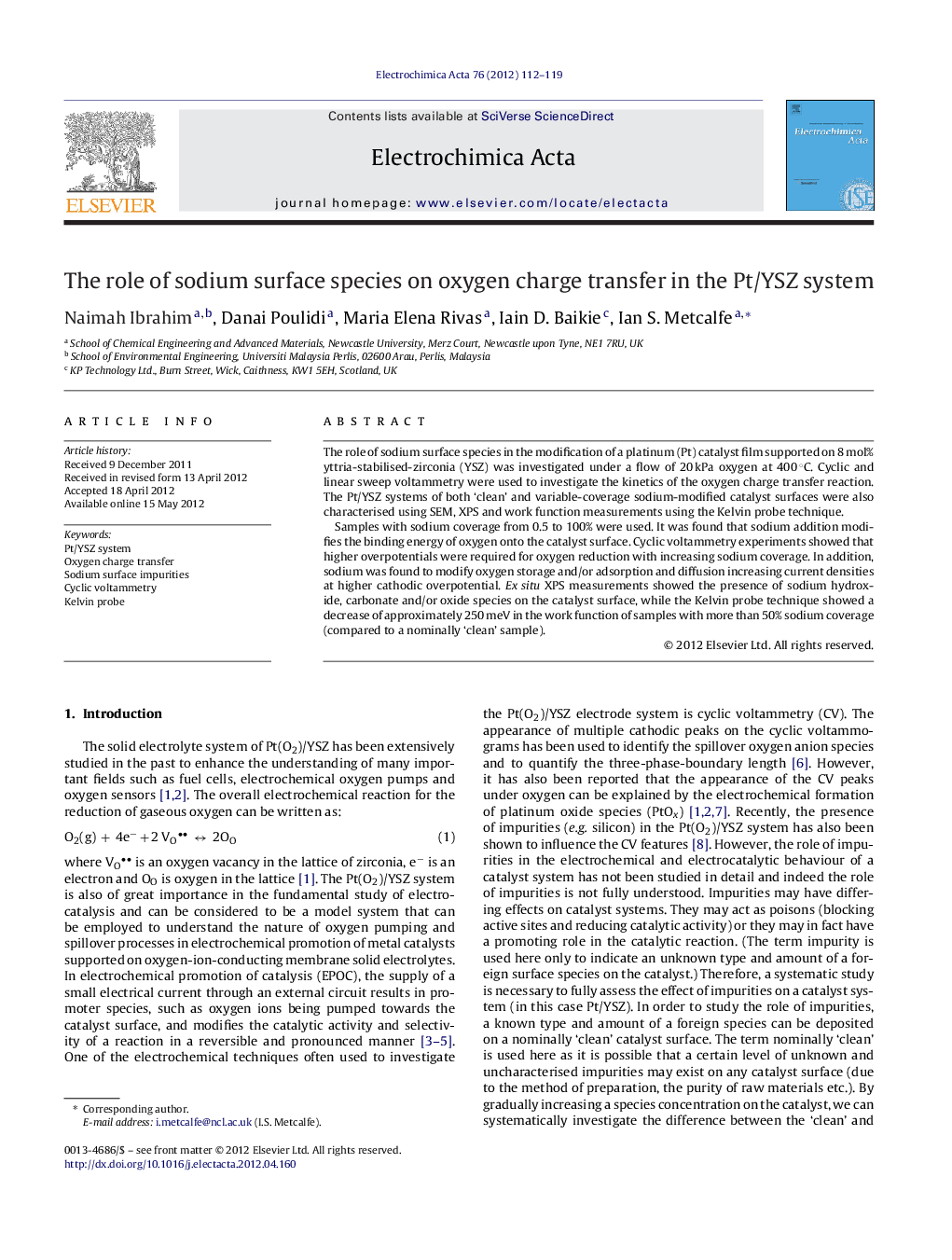| Article ID | Journal | Published Year | Pages | File Type |
|---|---|---|---|---|
| 188193 | Electrochimica Acta | 2012 | 8 Pages |
The role of sodium surface species in the modification of a platinum (Pt) catalyst film supported on 8 mol% yttria-stabilised-zirconia (YSZ) was investigated under a flow of 20 kPa oxygen at 400 °C. Cyclic and linear sweep voltammetry were used to investigate the kinetics of the oxygen charge transfer reaction. The Pt/YSZ systems of both ‘clean’ and variable-coverage sodium-modified catalyst surfaces were also characterised using SEM, XPS and work function measurements using the Kelvin probe technique.Samples with sodium coverage from 0.5 to 100% were used. It was found that sodium addition modifies the binding energy of oxygen onto the catalyst surface. Cyclic voltammetry experiments showed that higher overpotentials were required for oxygen reduction with increasing sodium coverage. In addition, sodium was found to modify oxygen storage and/or adsorption and diffusion increasing current densities at higher cathodic overpotential. Ex situ XPS measurements showed the presence of sodium hydroxide, carbonate and/or oxide species on the catalyst surface, while the Kelvin probe technique showed a decrease of approximately 250 meV in the work function of samples with more than 50% sodium coverage (compared to a nominally ‘clean’ sample).
► Study on the effect of sodium addition on platinum catalyst films. ► Sodium addition modifies the binding energy of oxygen onto the catalyst surface. ► Sodium addition modifies oxygen storage, adsorption and diffusion. ► XPS showed presence of sodium oxides, hydroxides and carbonates on catalyst surface. ► Work function of sodium-modified samples is lower by approximately 250 meV than clean sample.
